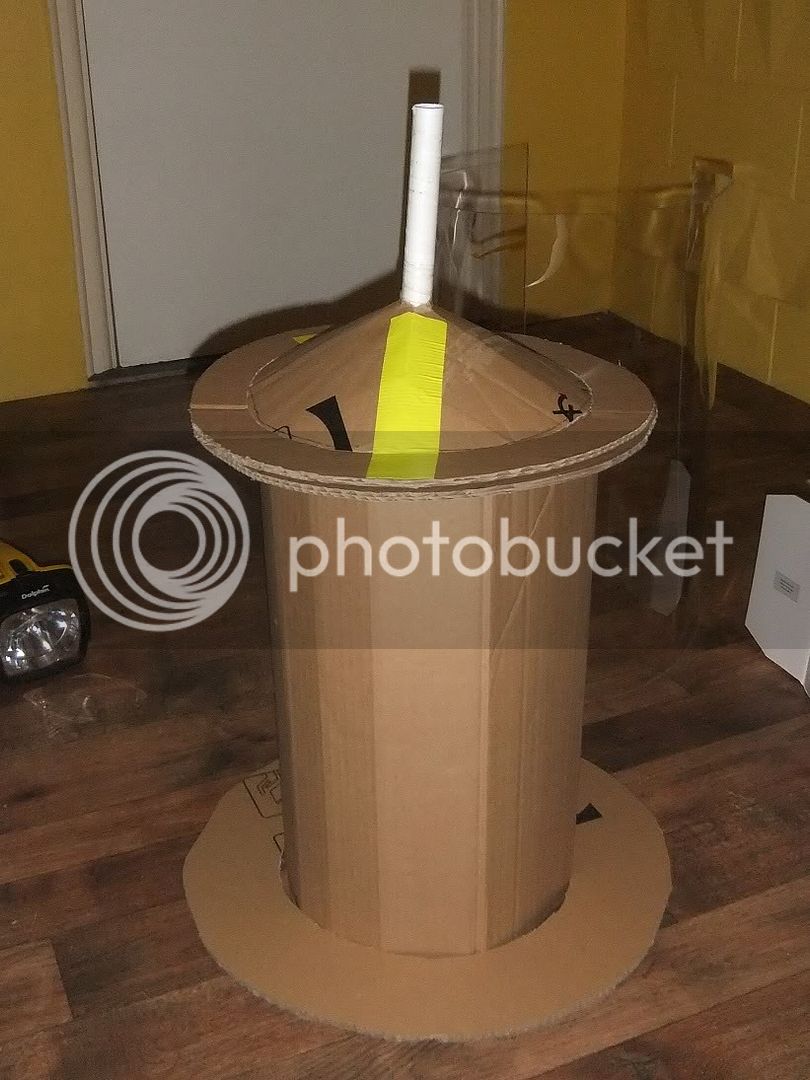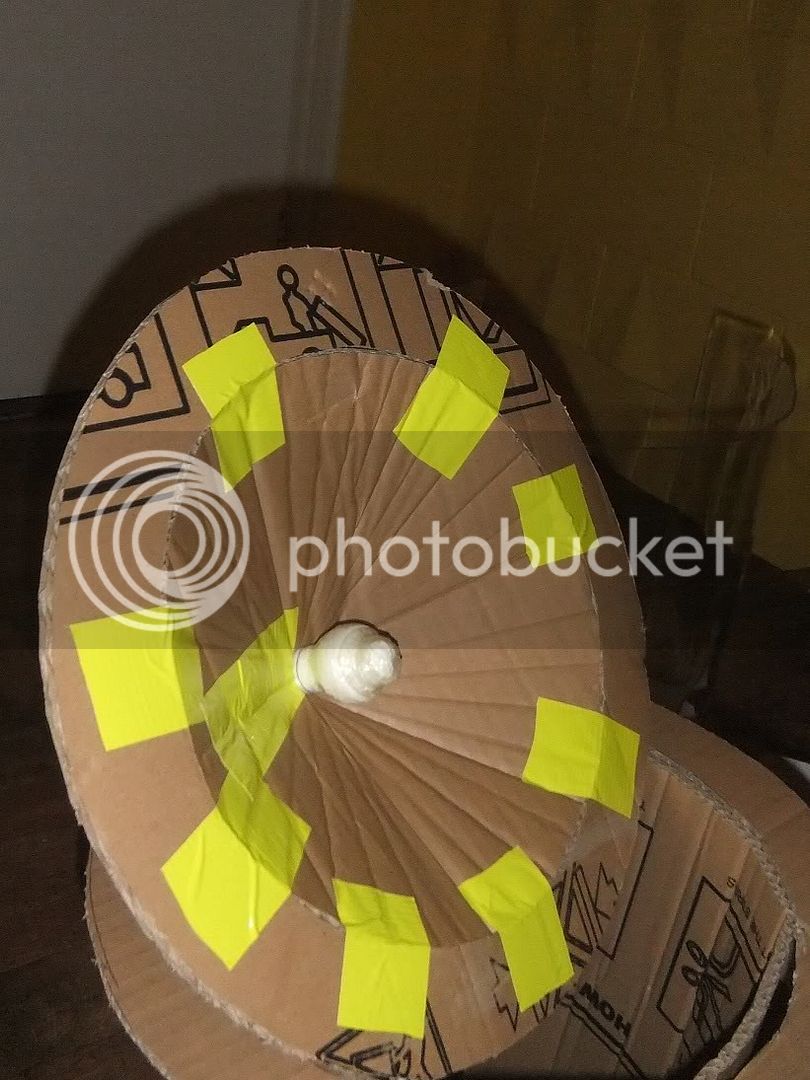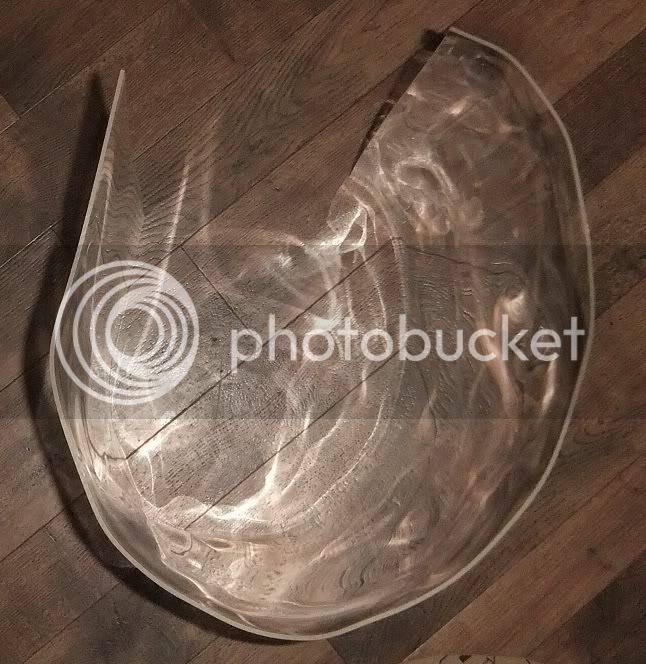It seems the false bottom rotation issue is solved. The issue was that when the false bottom is rotated about a pivot point directly above the butterfly valve's pivot point, as the butterfly disk rotates the false bottom gets closer and closer - to the point where they touch each other after just a quarter of a turn of the disk.
This seems to have been solved by moving the false bottom's pivot point (axis) horizontally so it is closer to the downward moving half of the disk. This way the disk can be rotated to an almost 90 degree (vertical) angle and thus maximise the area for the grain to fall out of the MLT. I'm still to tweak it and find out if it can go vertical, but there is an Animated video below>

I also made a mock up of the rotating tank washer (sprayball), and installed it in the cardboard mockup of the MLT/kettle. due to it being very close to the lid, it seems as though I wont need a 360 degree version and a 180 degree spray pattern will suffice.
But to make sure the spray pattern is effective I have decided to make a mockup version of the MLT using perspex so I can see how it cleans out the spent grain and how the mixer mixes the grain. At the moment I am thinking of having a motorised mixer offset towards one side of the MLT. Theory is that it would be like having only one beater in a cake mixer, and might improve the mixing as opposed to one centrally. This would allow the mixer to be on the low side of the butterfly valve so as not to hit it as the disk rotates, and free up the central space in the lid for the rotating tank washer. The diameter of the mixer will only be half the diameter of the vessel.
The first try rolling acrylic sheet using an electric heat gun did not turn out well at all:>
Will retry next weekend by constructing a 90cm x 60cm x 12cm high oven out of wood and once the whole sheet of acrylic has reached its plastic temperature where it can be shaped, rolling on a form - either a 300mm log or something similar.
This way I hope to be able to see any areas that arent washed by the tank washer before its made in stainless by
http://www.tripleninestainless.com.au/orbital.html which I doubt will be cheap.
Next stage is to make mockups of the air inlet and steam outlet tubes for the kettle - it will have a lid, and will have air pumped in so the steam is forced out. This outlet will go through a coil in the HLT to help to heat the sparge water for the next batch that will be mashing while the kettle boils the previous batch











